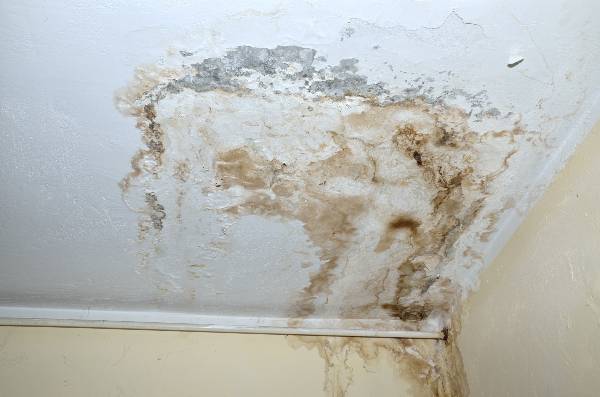Are you trying to find suggestions about Finding hidden leaks?

Early discovery of leaking water lines can minimize a potential disaster. Some tiny water leaks may not be noticeable.
1. Examine the Water Meter
Every house has a water meter. Examining it is a proven way that helps you discover leakages. For starters, switch off all the water sources. Guarantee nobody will certainly purge, utilize the faucet, shower, run the cleaning machine or dishwasher. From there, most likely to the meter and also watch if it will alter. Since no person is using it, there must be no motions. If it relocates, that suggests a fast-moving leakage. If you find no modifications, wait a hr or two as well as inspect back once more. This implies you might have a sluggish leak that could also be below ground.
2. Inspect Water Consumption
If you detect abrupt modifications, in spite of your intake being the same, it means that you have leakages in your plumbing system. A sudden spike in your expense suggests a fast-moving leakage.
On the other hand, a steady boost on a monthly basis, despite having the very same habits, reveals you have a slow-moving leak that's also gradually rising. Call a plumber to extensively check your residential property, specifically if you really feel a warm area on your flooring with piping below.
3. Do a Food Coloring Test
When it comes to water consumption, 30% originates from toilets. Test to see if they are running properly. Drop specks of food color in the container and wait 10 mins. If the color somehow infiltrates your dish during that time without flushing, there's a leakage in between the storage tank as well as bowl.
4. Asses Exterior Lines
Don't fail to remember to inspect your exterior water lines also. Test faucets by affixing a garden hose. Must water leak out of the link, you have a loose rubber gasket. Replace this and also guarantee all links are limited. If you've obtained a sprinkler system, it will certainly help get it expertly checked out as well as preserved every year. One little leakage can throw away lots of water and increase your water expense.
5. Assess the situation as well as evaluate
Home owners ought to make it a practice to check under the sink counters as well as also inside cupboards for any bad odor or mold and mildew growth. These 2 red flags suggest a leak so prompt interest is needed. Doing regular examinations, also bi-annually, can save you from a major trouble.
Inspect for stainings as well as weakening as many pipelines and devices have a life span. If you believe leaking water lines in your plumbing system, don't wait for it to rise.
Early discovery of dripping water lines can mitigate a potential catastrophe. Some tiny water leakages may not be visible. Examining it is a guaranteed means that helps you find leaks. One tiny leak can lose lots of water as well as spike your water bill.
If you think dripping water lines in your plumbing system, don't wait for it to rise.
How to Know If Your Home Has a Hidden Leak
Water Meter Reveals Inexplicable Water Usage
If you’d like to test whether or not there’s a leak somewhere in your home, you can do this using your water meter. Here is how to conduct the test:
Don’t use any water in your home for at least 30 minutes; this also means not turning on faucets or water-using appliances.
Go outside, and check your water meter for activity.
If your water meter shows that there was activity, even though no one was using any water, this proves that there is a leak in your home.Visible Mold or Mildew Growth
Leaks behind walls create moist, dark environments that allow mold and mildew to grow and thrive. Eventually, you might see mold growth forming on the wall closest to a hidden leak.
If mold is growing in an area that receives a high amount of moisture, such as a bathroom, it may simply be an indication that better ventilation is needed. However, if you see mold growth on a wall or the ceiling in an area where you would not expect, you probably have a hidden leak.
Musty, Mildew Odor
Sometimes you might not be able to see the mold or mildew that is growing as a result of a leak. However, the smell can give the problem away just as easily. If you catch a whiff of something musty, there’s a good chance that old water is collecting somewhere in your home that you can’t see.
Stained/Warped Walls, Ceilings, or Floors
When your home soaks up water, a variety of red flags can become visible, including ceiling stains, bubbling drywall, warped walls, and sagging floors. While these issues can be caused by excess humidity, they can also be signs that a pipe or plumbing connection has started leaking behind your walls.
Inexplicably High Water Bill
After a while, you get a general sense for what your water bill should be. If you own a pool or sprinkler system, your bill will tend to be higher during summer. However, if you receive a water bill that seems especially high, and you can’t figure out what caused it, then you may have a hidden leak somewhere that’s increasing your bill.
https://www.plumbingjoint.com/blog/2019/july/how-to-know-if-your-home-has-a-hidden-leak/

As an enthusiastic reader on Top leak detection hacks, I figured sharing that excerpt was a good idea. Are you aware of another individual who is occupied with the topic? Please feel free to promote it. We take joy in reading our article about Locating water leaks.